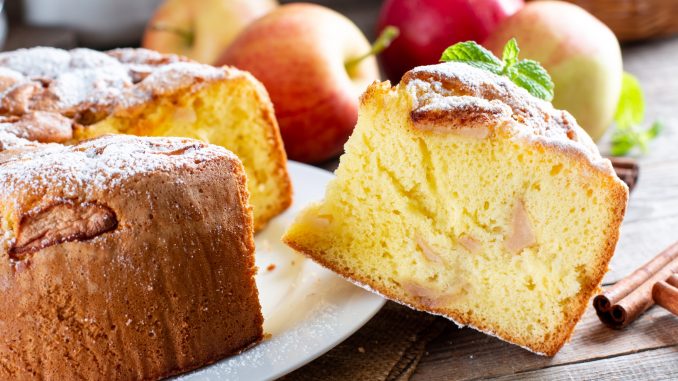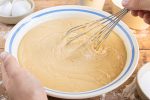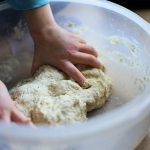
The chiffon cake is highly popular throughout the United States and was first created by Harry Baker. It is extremely light and uses cake flour, vegetable oil, eggs, sugar and baking powder with added flavourings. The main difference between this cake and others is the replacement of a traditional solid fat such as butter or shortening (lard and margarine) with vegetable oil. It is also an example of a foam cake because a much lighter fluffier texture is created by beating egg whites separately until they are stiff and then folding them into the cake batter before baking.
These types of cake are similar to angel cakes and other foam cakes. Unlike other cakes, the chiffon cake as a a much higher oil and egg content. Chiffon cakes do not harden or dry as other traditional cakes might and so are ideal as manufactured cakes. They also make excellent bundt cakes and the confectioner or cake maker can add fruit pieces such as apple or citrus without losing crumb texture.
A typical ingredient list would be cake flour (about 7.4% protein), sucrose, sodium chloride, soybean oil, fresh eggs, nonfat dry milk powder, baking powder and cream of tartar (Lin et al., 2003). A typical formulation from the same article is:-
Ingredients
| Batter (in grams) | |
| Cake flour (sifted) | 100 |
| Baking powder | 4.0 |
| Sucrose (caster sugar) | 75.1 |
| Sodium chloride | 2.0 |
| soybean oil | 50.0 |
| egg yolk | 50.0 |
| water | 65.1 |
| nonfat dry milk powder | 8.0 |
The Egg White Foam
| Foam (in grams) | |
| Egg white | 100.0 |
| Sucrose (caster sugar) | 60.0 |
| Cream of Tartar | 0.6 |
The cake is prepared by creating two separate mixes. First, the flour is sifted through a sieve to introduce air and remove large particles. For the batter mix, the egg yolk, sucrose and salt are mixed in a typical mixing bowl to disperse all the ingredients. Then, water, soybean oil and water are added. These are mixed in. The sifted cake flour and baking powder is then added. The whole mixture is either mechanically mixed or mixed by hand using an eggbeater to produce a smooth batter. Researchers would monitor the time and even the number of strokes needed to produce that batter.
Egg whites are whipped in a separate bowl to form soft peaks. the sugar, and cream of tartar are added slowly with whipping to create firm but moist peaks. This aerated egg white foam is folded into the flour and liquid mixture. The action cannot be too vigorous other wise the cake batter will lose aeration. The batter is quickly poured into cake pans or tins and then baked in a pre-heated oven. the setting is often 180C for 30 minutes. Allow the cakes to cool for a few hours and then store in tins or in low density polyethylene bags.
Chiffon cake is a good model for testing replacement ingredients. Pulse flours, sugar-replacement especially with polyols and sugar alcohols such as erythritol have been explored .
References
Lin, S. D., Hwang, C. F., & Yeh, C. H. (2003). Physical and sensory characteristics of chiffon cake prepared with erythritol as replacement for sucrose. Journal of Food Science, 68(6), pp. 2107-2110.


Leave a Reply